Application of Electronic Optimizers to Enhance the Operational Safety of Photovoltaic Installations in Residential Areas
Abstract
1. Introduction
1.1. Generalities
1.2. Regulations Concerning the Safety of Photovoltaic Plants for Residential Areas
1.3. Challenges of Implementing a Photovoltaic Power Plant
- -
- Overcurrent Protection: This is typically achieved using fuses or circuit breakers. These critical components serve to safeguard various parts of the system, such as inverters and wiring, by interrupting the electrical circuit whenever the current exceeds a predefined safety threshold. This mechanism helps prevent overheating and potential damage to the system.
- -
- Surge Protection: Solar power systems are susceptible to external threats, including lightning strikes or unexpected voltage spikes. Surge protection devices are essential in shielding sensitive electronic components from these dangerous surges, thus ensuring the longevity and reliability of the equipment.
- -
- Grounding: Grounding plays a vital role in electrical safety by providing a low-resistance pathway for stray currents to dissipate into the Earth. This practice is crucial in preventing electrical shocks to individuals and minimising the risk of equipment damage caused by electrical faults. By ensuring adequate grounding, solar systems can enhance both user safety and operational stability.
1.4. Examples of Papers Focused on Improving the Safety of PVRA
1.5. The Article’s Content and Scope
2. Materials and Methods
- -
- Test of DC arc detection, with and without AFCI function activated;
- -
- Test of rapid shutdown, using the DC switch and AC switch.
2.1. Tests of DC Arc Detection
- -
- Test of DC arc detection without AFCI function activated;
- -
- Test of DC arc detection with AFCI function activated.
- -
- Solar inverter SUN2000-6KTL-M1 (6 kW, 3 phase)
- -
- 2 PV strings with 8 PV panels/string (total 16 PV panels)
- -
- Panel type: JKM405N-6RL3-V N-Type Mono-crystalline 405 Wp
- -
- String nominal power: 3240 Wp per string
- -
- Mixed Signal Oscilloscope type MSO54, Tektronix, Beaverton, OR, USA, s/n: B010644
- -
- HV probe P6015A, 1000X, 3 pF, 100 MOhm, 20/40 kV, Tektronix, Beaverton, OR, USA, s/n: 2040423-1
- -
- Current probe 30 A TCP0030A, Tektronix, Beaverton, OR, USA, s/n: C006185
- -
- Digital Multimeter 2712, BK Precision, Yorba Linda, CA, USA, s/n: 140F19180
2.2. Test of Rapid Shutdown
2.3. Test with Partially Shaded PC Panel
Test Method and Procedure
- A.
- Set up the test environment to ensure that each PV panel runs under the same working conditions. Divide 16 PV panels into two strings, Pv1 and Pv2. Each PV string contains eight PV panels. In the test environment, all the Pv1 panels have individual optimizers, but no optimizer is configured for the panels of the string Pv2. The strings are connected to the two Input ports of the inverter, meaning that each string supplies an independent MPPT controller, and the energy yield for each string is not affected by the other one. The output of the inverter is the AC grid of a residential building, with no restrictions on the energy production.
- B.
- Measure the values of voltage and current to determine the power with external equipment and to validate the accuracy of the FusionSolar data collection.
- C.
- Select a PV panel from each of the two PV strings and use a black plastic bag of the same size and material to block the PV panel to simulate shadow blocking.
- D.
- Start the test. The test period was 14 days, and the data were collected daily at the same hour.
- E.
- After 14 days, we collected the daily data of the yield of each PV string and compared the energy yield for analysis. The inverter report available online is based on instantaneous string voltage (VDC) and current (IDC), and individual MPPT1 and MPPT2 yields, expressed in kWh.
3. Results and Discussion
3.1. Discussion of the Results Regarding the AFCI System’s Operation Testing
3.2. Discussion of the Results Regarding the RSD System’s Operation Testing
- -
- Measuring the stopping time of the inverter when the DC switch was switched OFF, with the RSD function active.
- -
- Measuring the stopping time of the inverter when the AC switch was switched OFF, with the RSD function active.
3.3. Discussion of the Results Regarding the PV Optimizer Testing
4. Conclusions
Author Contributions
Funding
Data Availability Statement
Acknowledgments
Conflicts of Interest
Abbreviations
| AFCI | arc-fault circuit interrupters |
| RSD | Rapid Shutdown Devices |
References
- Clean Energy Technology Observatory: Photovoltaics in the European Union—2022 Status Report on Technology Development, Trends, Value Chains and Markets. Available online: https://publications.jrc.ec.europa.eu/repository/handle/JRC130720 (accessed on 10 May 2024).
- Vodapally, S.N.; Ali, M.H.A. Comprehensive Review of Solar Photovoltaic (PV) Technologies, Architecture, and Its Applications to Improved Efficiency. Energies 2023, 16, 319. [Google Scholar] [CrossRef]
- Blakers, A.; Wang, A.; Milne, A.-M.; Zhao, J.; Green, M.-A. 22.8% efficient silicon solar cell. Appl. Phys. Lett. 1989, 55, 1363–1365. [Google Scholar] [CrossRef]
- Green, M.A.; Dunlop, E.D.; Hohl-Ebinger, J.; Yoshita, M.; Kopidakis, N.; Bothe, K.; Hinken, D.; Rauer, M.; Hao, X. Solar cell efficiency tables (Version 60). Prog. Photovolt. 2022, 30, 687–701. [Google Scholar] [CrossRef]
- Putzke, L.; Michels, L.; Bellinaso, L.-V. Electric Arcs in Photovoltaic Systems: A Comparative Analysis of IEC 63027, UL 1699B, and GB-t 39750 Standards. In Proceedings of the 2023 IEEE 8th Southern Power Electronics Conference and 17th Brazilian Power Electronics Conference (SPEC/COBEP), Florianopolis, Brazil, 26–29 November 2023; pp. 1–5. [Google Scholar] [CrossRef]
- Ivins, R. Value Engineering Tips. 2014 NEC 690.12 Rapid Shutdown for String Inverters on Flat Roofs. Available online: https://www.purepower.com/blog/nec-690-12-rapid-shutdown-of-pv-systems-on-buildings (accessed on 30 June 2025).
- Ivins, R. Pure Power Engineering, Value Engineering Tips. 2017 NEC 690.12 Rapid Shutdown—Important Changes. Available online: https://www.purepower.com/blog/2017-nec-690.12-rapid-shutdown-important-changes (accessed on 30 June 2025).
- de Souza Silva, J.L.; Moreira, H.S.; de Mesquita, D.B.; Cavalcante, M.M.; Villalva, M.G. Modular Architecture with Power Optimizers for Photovoltaic Systems. In Proceedings of the 2019 International Conference on Smart Energy Systems and Technologies (SEST), Porto, Portugal, 9–11 September 2019; pp. 1–6. [Google Scholar] [CrossRef]
- Toche Tchio, G.M.; Kenfack, J.; Kassegne, D.; Menga, F.-D.; Ouro-Djobo, S.S. A Comprehensive Review of Supervised Learning Algorithms for the Diagnosis of Photovoltaic Systems, Proposing a New Approach Using an Ensemble Learning Algorithm. Appl. Sci. 2024, 14, 2072. [Google Scholar] [CrossRef]
- Gu, Y.; Gong, C.; Chen, H.; Zhang, J.; Wang, Z. Series DC Arc Characteristic and Diagnosis Strategy for Distributed PV Power Generation. Electroteh. Electron. Autom. (EEA) 2022, 70, 1–10. [Google Scholar] [CrossRef]
- Beiu, C.; Buică, G.; Antonov, A.-E.; Pasculescu, D.; Dobra, R.; Risteiu, M. Arc Flash Detection on Photovoltaic Systems. Ann. Univ. Petrosani Electr. Eng. 2024, 26, 79–88. [Google Scholar]
- Song, L.; Lu, C.; Li, C.; Xu, Y.; Liu, L.; Wang, X. Progress of Photovoltaic DC Fault Arc Detection Based on VOSviewer Bibliometric Analysis. Energies 2024, 17, 2450. [Google Scholar] [CrossRef]
- SolarEdge White Paper, “SolarEdge Safety Solution”. 2022. Available online: https://natec.com/wp-content/uploads/2022/11/SolarEdge-Safety-Solution-White-Paper.pdf (accessed on 18 August 2025).
- SolarEdge. 2025. Available online: https://knowledge-center.solaredge.com/sites/kc/files/se-power-optimizer-s-series-datasheet.pdf (accessed on 6 August 2025).
- Huawei. SUN2000-(3KTL-10KTL)-M0 User Manual. Available online: https://support.huawei.com/enterprise/en/doc/EDOC1100059932/5ed1b520/product-introduction#EN-US_CONCEPT_0141929343 (accessed on 20 June 2024).
- Tigo. 2025. Available online: https://www.tigoenergy.com/ (accessed on 6 August 2025).
- SUN. Available online: https://manuals.sma.de/SBSExx-US-50/en-US/13317429131.html (accessed on 6 August 2025).
- Ramos, F.; Neto, J.; Almeida, F.; Velázquez, S.; Lima, B. Compliance Analysis of Series Arc-fault in AFCI-Equipped Inverters in Accordance with IEC 63027. IEEE Lat. Am. Trans. 2024, 22, 761–770. [Google Scholar] [CrossRef]
- Zhang, X.; Chen, M.; Fu, Y.; Li, Y. A Step-Down Partial Power Optimizer Structure for Photovoltaic Series-Connected Power Optimizer System. In Proceedings of the 2018 IEEE International Power Electronics and Application Conference and Exposition (PEAC), Shenzhen, China, 4–7 November 2018; pp. 1–4. [Google Scholar] [CrossRef]
- Elmelegi, A.; Aly, M.; Ahmed, E.M.; Alhaider, M.M. An Efficient Low-Cost Distributed MPPT Method for Energy Harvesting in Grid-Tied Three-Phase PV Power Optimizers. In Proceedings of the 2019 21st International Middle East Power Systems Conference (MEPCON), Cairo, Egypt, 17–19 December 2019; pp. 1042–1047. [Google Scholar] [CrossRef]
- Muller, N.; Flores-Bahamonde, F.; Pesantez, D.; Renaudineau, H.; Lopez-Caiza, D.; Kouro, S. Reconfigurable Partial Power Converter for Power Optimizers in PV Systems. In Proceedings of the IECON 2022—48th Annual Conference of the IEEE Industrial Electronics Society, Brussels, Belgium, 17–20 October 2022; pp. 1–6. [Google Scholar] [CrossRef]
- Azab, M. DC power optimizer for PV modules using SEPIC converter. In Proceedings of the 2017 IEEE International Conference on Smart Energy Grid Engineering (SEGE), Oshawa, ON, Canada, 14–17 August 2017; pp. 74–78. [Google Scholar] [CrossRef]
- Maheri, H.M.; Chub, A.; Vinnikov, D.; Blinov, A. Photovoltaic Microconverter with Integrated Sub-Modular Power Optimizer. In Proceedings of the 2021 IEEE 15th International Conference on Compatibility, Power Electronics and Power Engineering (CPE-POWERENG), Florence, Italy, 14–16 July 2021; pp. 1–6. [Google Scholar] [CrossRef]
- SMA Solutions. “Fire Safety of PV Systems” by Angelika Löning (Guest Post). Available online: https://www.sma-sunny.com/en/fire-safety-of-pv-systems/ (accessed on 5 June 2024).

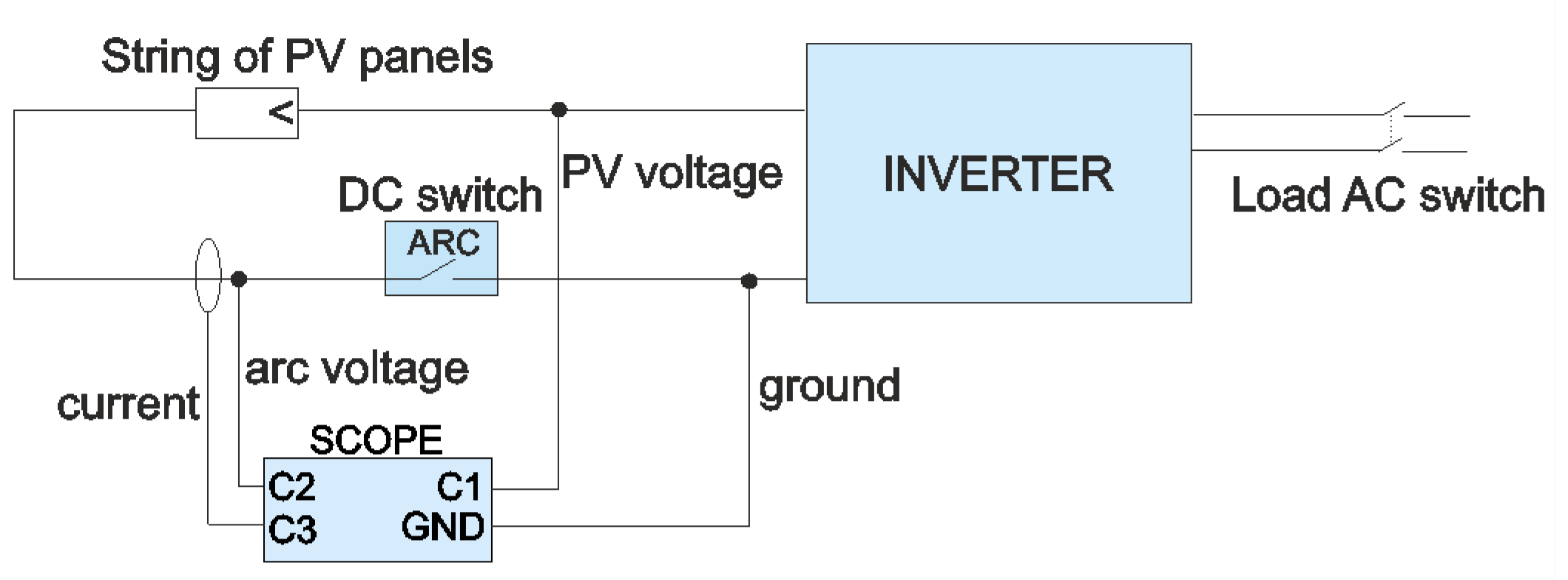
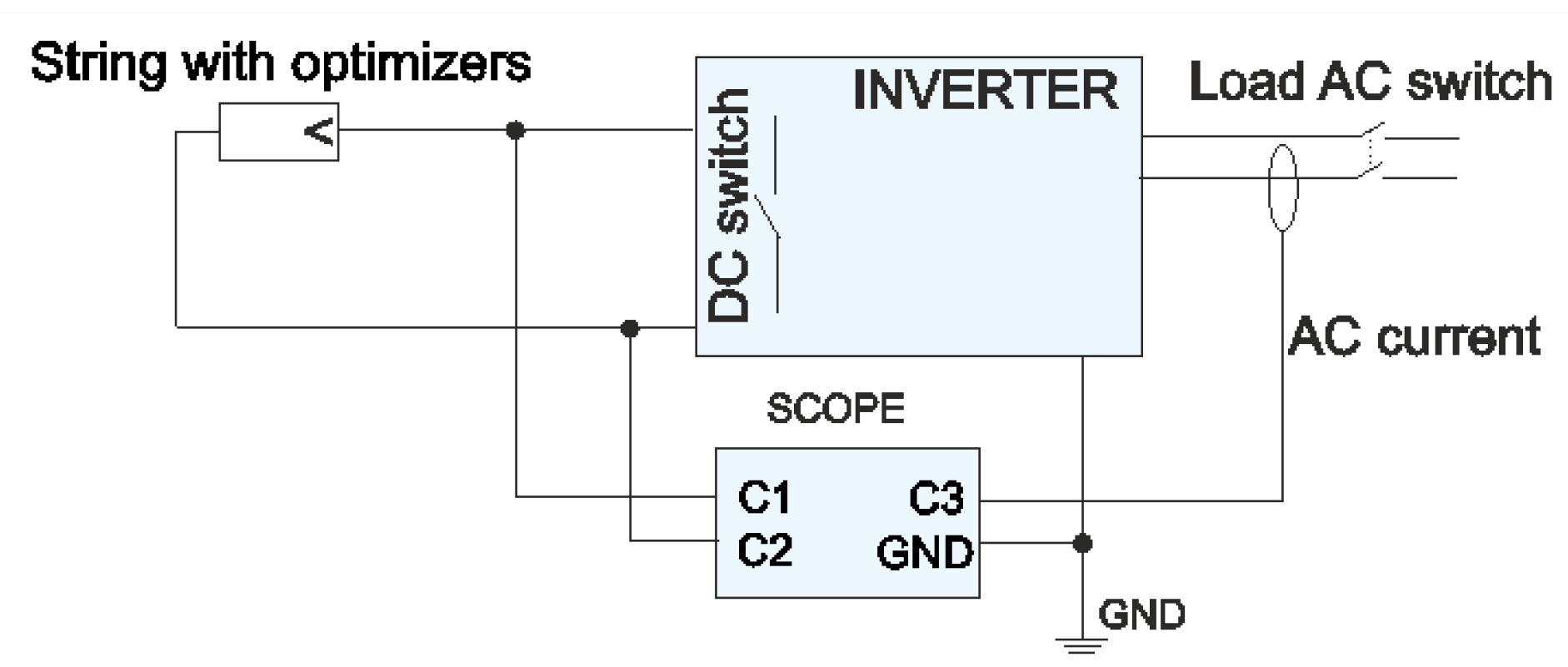
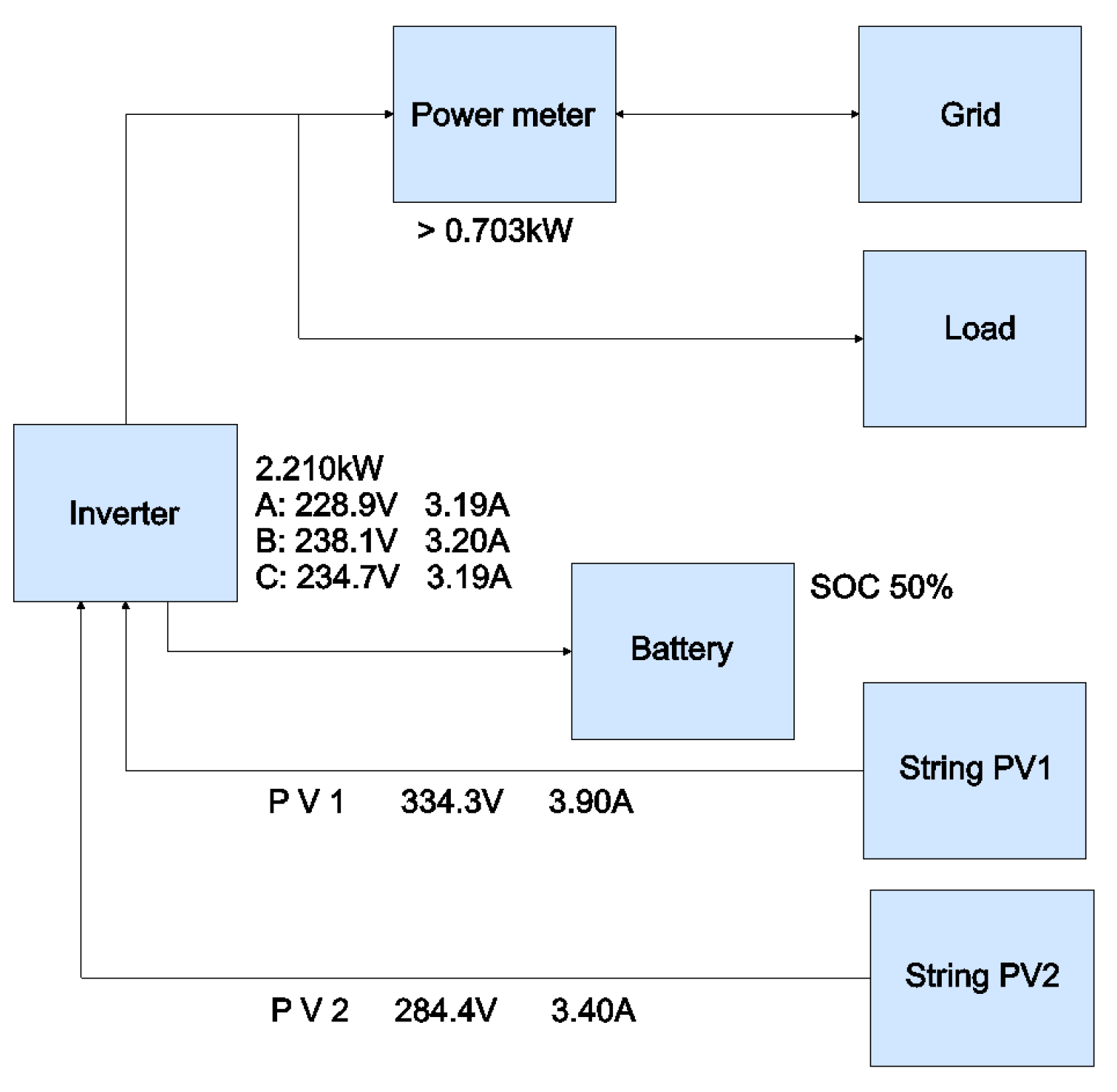


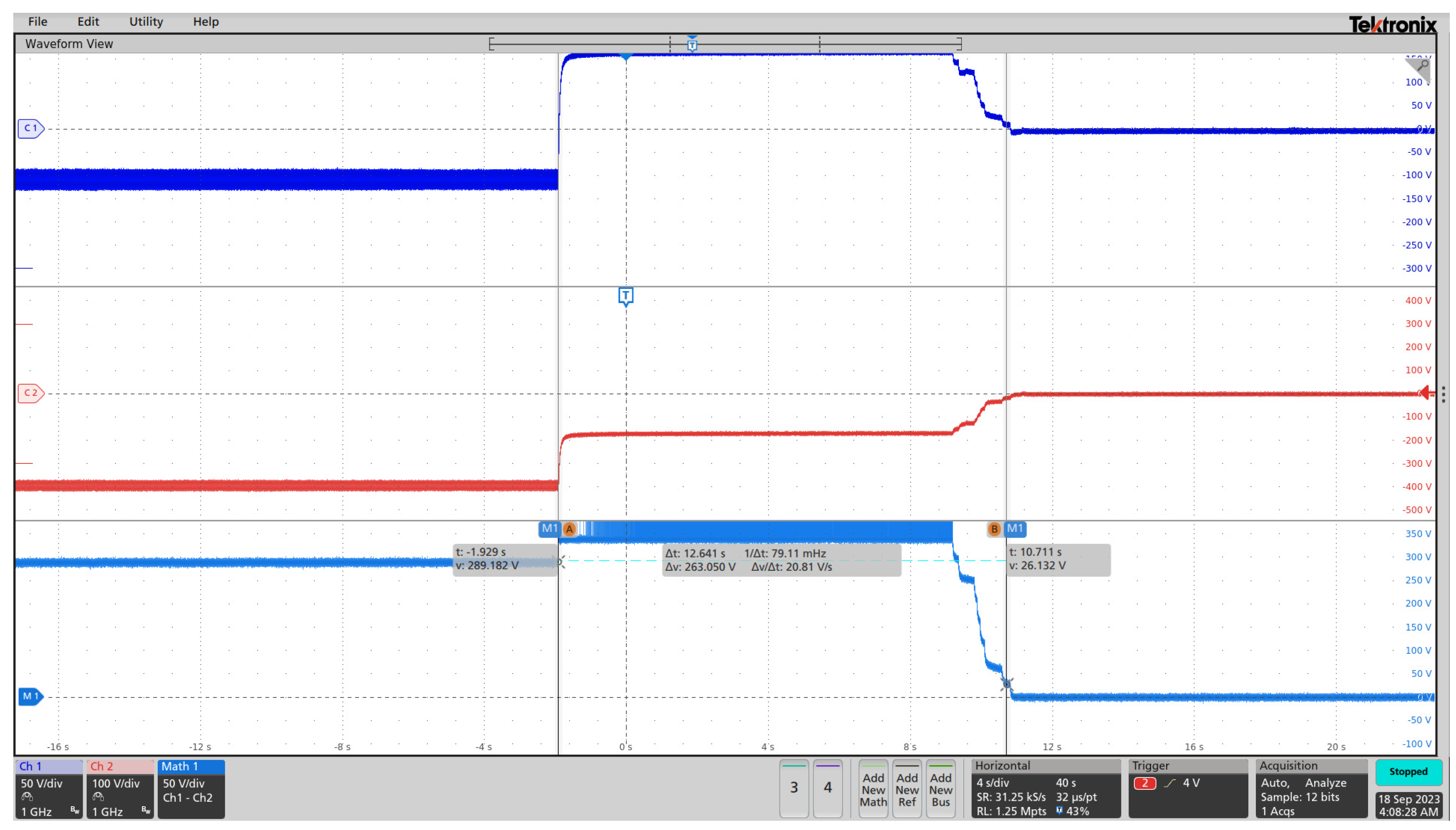
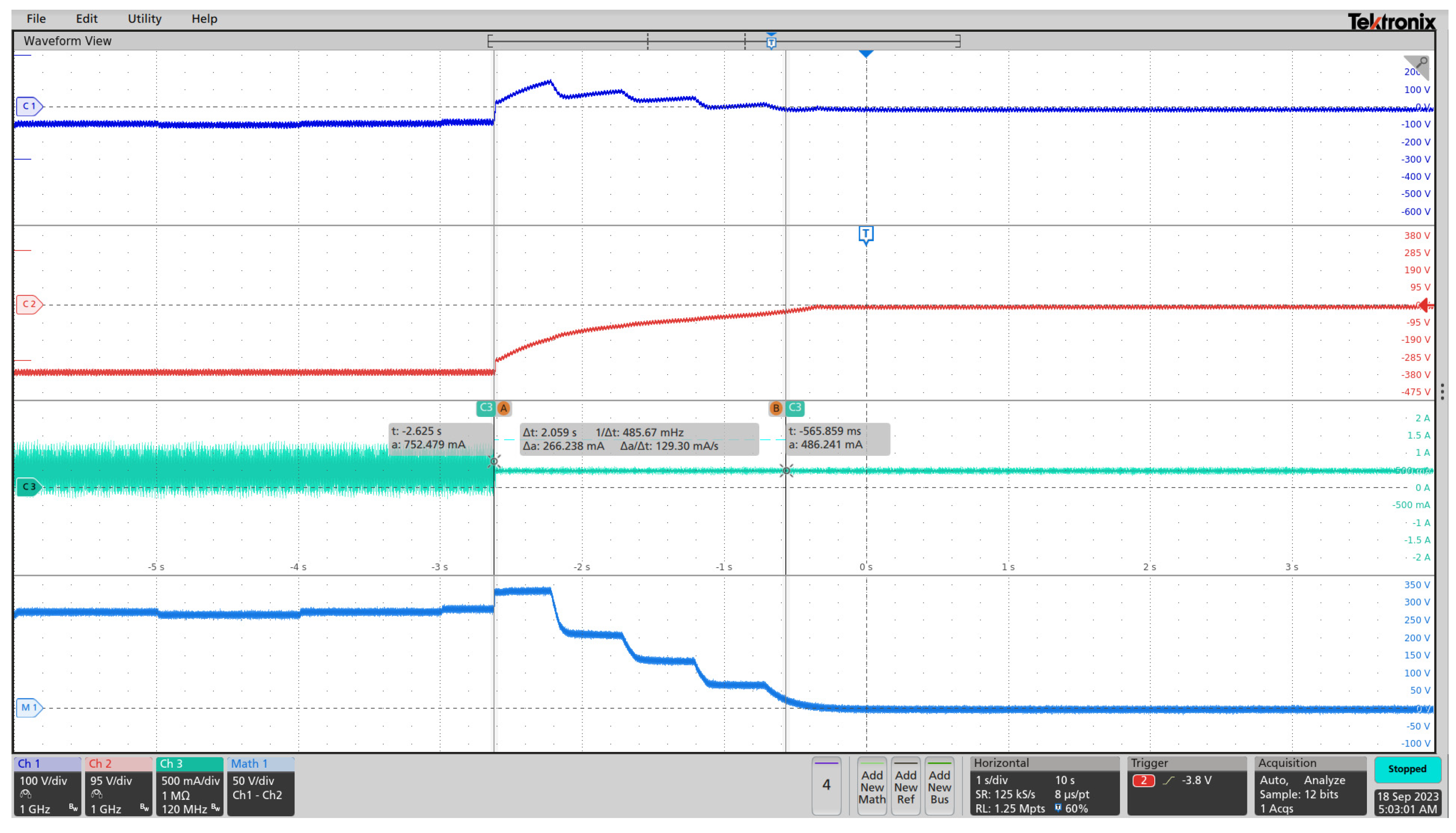
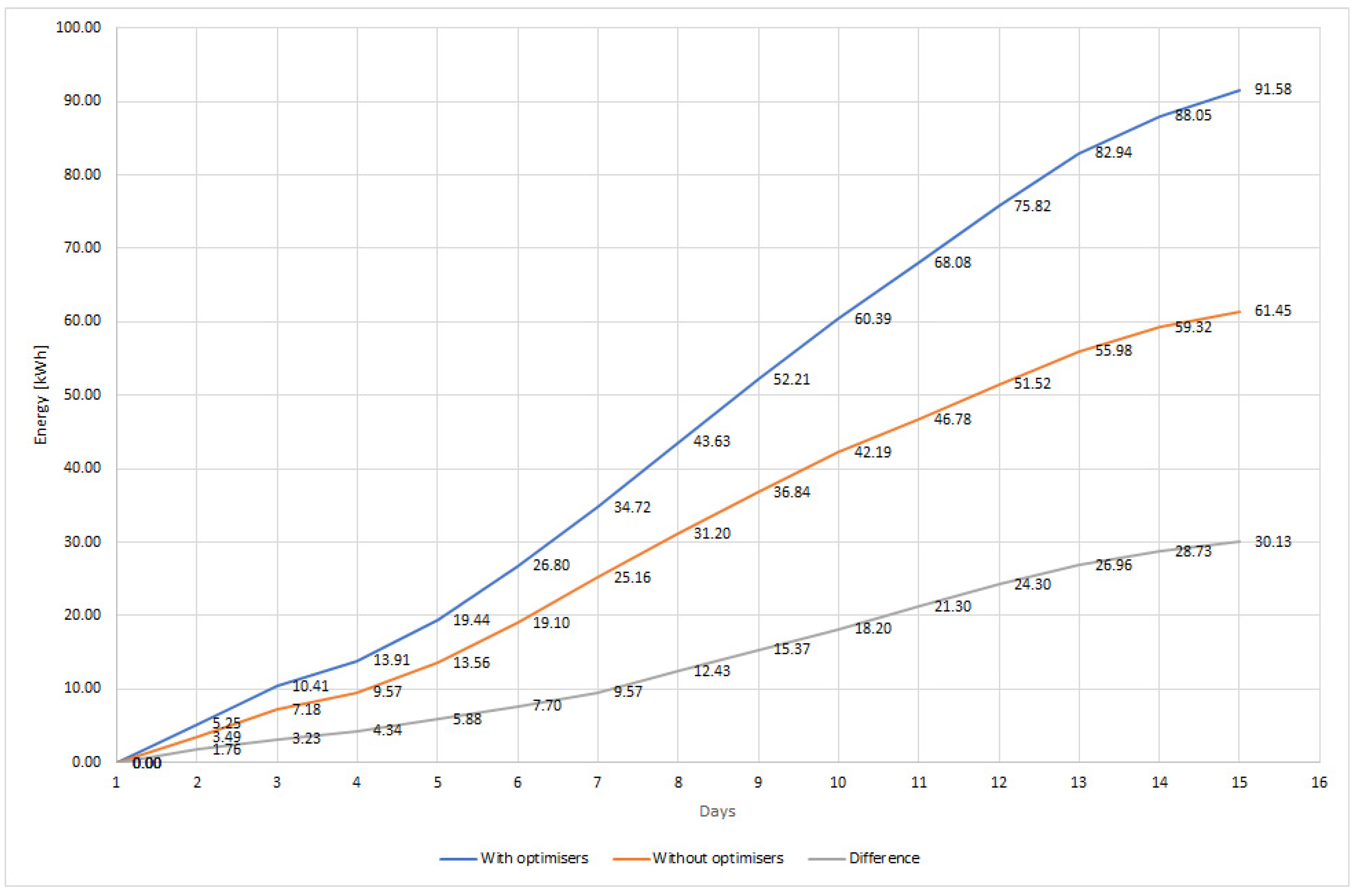
| Test ID | DC Voltage [VDC] | DC Current [ADC] | Time Interval [ms] |
|---|---|---|---|
| 1 | 318 | 4.45 | 144 |
| 2 | 306 | 4.20 | 53 |
| 3 | 282 | 4.8 | 87 |
| 4 | 264 | 5.2 | 19.6 |
| 5 | 280 | 4.8 | 62.8 |
| 6 | 245 | 4.7 | 54 |
| 7 | 241 | 4.02 | 94.5 |
| 8 | 252 | 4.1 | 105 |
| 9 | 218 | 4.1 | 41.8 |
| 10 | 198 | 3.8 | 64 |
| 11 | 256 | 4.2 | 145 |
| 12 | 256 | 4.2 | 142 |
| 13 | 225 | 4.2 | 97 |
| 14 | 280 | 4.26 | 78 |
| 15 | 283 | 4.57 | 132 |
| 16 | 211 | 8.11 | 74.6 |
| 17 | 250 | 5.68 | 68.7 |
| 18 | 250 | 5.98 | 86.8 |
| 19 | 235 | 6.2 | 168 |
| 20 | 260 | 6.6 | 123 |
| 21 | 230 | 6.9 | 103.5 |
| 22 | 268 | 7.3 | 101.5 |
| 23 | 253 | 3.9 | 101.5 |
| 24 | 235 | 3.8 | 97 |
| 25 | 240 | 3.4 | 128 |
| 26 | 235 | 3.6 | 122.6 |
| 27 | 232 | 7.7 | 108 |
| Test ID | DC Voltage [VDC] | Time Interval [s] |
|---|---|---|
| 1 | 296 | 12.641 |
| 2 | 295 | 12.641 |
| 3 | 289 | 12.641 |
| 4 | 295 | 12.135 |
| Test ID | DC Voltage [VDC] | Time Interval [s] |
|---|---|---|
| 1 | 250 | 3.886 |
| 2 | 311 | 2.733 |
| 3 | 253 | 3.529 |
| 4 | 246 | 2.217 |
| 5 | 264 | 1.738 |
| 6 | 257 | 2.059 |
| V1 [VDC] | V2 [VDC] | Error [%] | I1 [ADC] | I2 [ADC] | Error [%] |
|---|---|---|---|---|---|
| 333 | 338.6 | 1.65 | 3.6 | 3.53 | 1.98 |
| 333 | 338.5 | 1.62 | 3.63 | 3.58 | 1.40 |
| 334 | 338.9 | 1.45 | 3.58 | 3.52 | 1.70 |
| 334 | 339 | 1.47 | 3.56 | 3.49 | 2.01 |
| V1 [VDC] | V2 [VDC] | Error [%] | I1 [ADC] | I2 [ADC] | Error [%] |
|---|---|---|---|---|---|
| 278 | 277.2 | 0.29 | 3.47 | 3.42 | 1.46 |
| 279 | 277.1 | 0.69 | 3.46 | 3.47 | −0.29 |
| 278 | 276.8 | 0.43 | 3.48 | 3.49 | −0.29 |
| 277 | 276.1 | 0.33 | 3.45 | 3.45 | 0.00 |
| 278 | 276.7 | 0.47 | 3.45 | 3.46 | −0.29 |
| 278 | 276.8 | 0.43 | 3.45 | 3.44 | 0.29 |
| Date | PV1 Absolute Energy [kWh] | PV2 Absolute Energy [kWh] |
|---|---|---|
| Day 1 | 0 | 0 |
| Day 2 | 5.25 | 3.49 |
| Day 3 | 10.41 | 7.18 |
| Day 4 | 13.91 | 9.57 |
| Day 5 | 19.44 | 13.56 |
| Day 6 | 26.80 | 19.10 |
| Day 7 | 34.72 | 25.16 |
| Day 8 | 43.63 | 31.20 |
| Day 9 | 52.21 | 36.84 |
| Day 10 | 60.39 | 42.19 |
| Day 11 | 68.08 | 46.78 |
| Day 12 | 75.82 | 51.52 |
| Day 13 | 82.94 | 55.98 |
| Day 14 | 88.05 | 59.32 |
| Day 15 | 91.58 | 61.45 |
Disclaimer/Publisher’s Note: The statements, opinions and data contained in all publications are solely those of the individual author(s) and contributor(s) and not of MDPI and/or the editor(s). MDPI and/or the editor(s) disclaim responsibility for any injury to people or property resulting from any ideas, methods, instructions or products referred to in the content. |
© 2025 by the authors. Licensee MDPI, Basel, Switzerland. This article is an open access article distributed under the terms and conditions of the Creative Commons Attribution (CC BY) license (https://creativecommons.org/licenses/by/4.0/).
Share and Cite
Sima, D.-A.; Tudor, E.; El-Leathey, L.-A.; Cîrciumaru, G.; Vasile, I.; Grecu, I. Application of Electronic Optimizers to Enhance the Operational Safety of Photovoltaic Installations in Residential Areas. Electronics 2025, 14, 3290. https://doi.org/10.3390/electronics14163290
Sima D-A, Tudor E, El-Leathey L-A, Cîrciumaru G, Vasile I, Grecu I. Application of Electronic Optimizers to Enhance the Operational Safety of Photovoltaic Installations in Residential Areas. Electronics. 2025; 14(16):3290. https://doi.org/10.3390/electronics14163290
Chicago/Turabian StyleSima, Daniela-Adriana, Emil Tudor, Lucia-Andreea El-Leathey, Gabriela Cîrciumaru, Ionuț Vasile, and Iuliana Grecu. 2025. "Application of Electronic Optimizers to Enhance the Operational Safety of Photovoltaic Installations in Residential Areas" Electronics 14, no. 16: 3290. https://doi.org/10.3390/electronics14163290
APA StyleSima, D.-A., Tudor, E., El-Leathey, L.-A., Cîrciumaru, G., Vasile, I., & Grecu, I. (2025). Application of Electronic Optimizers to Enhance the Operational Safety of Photovoltaic Installations in Residential Areas. Electronics, 14(16), 3290. https://doi.org/10.3390/electronics14163290







